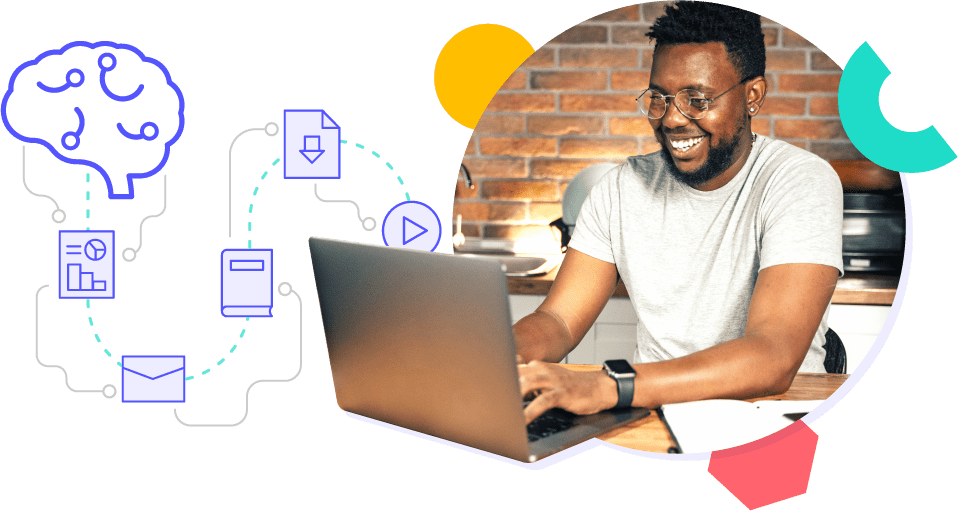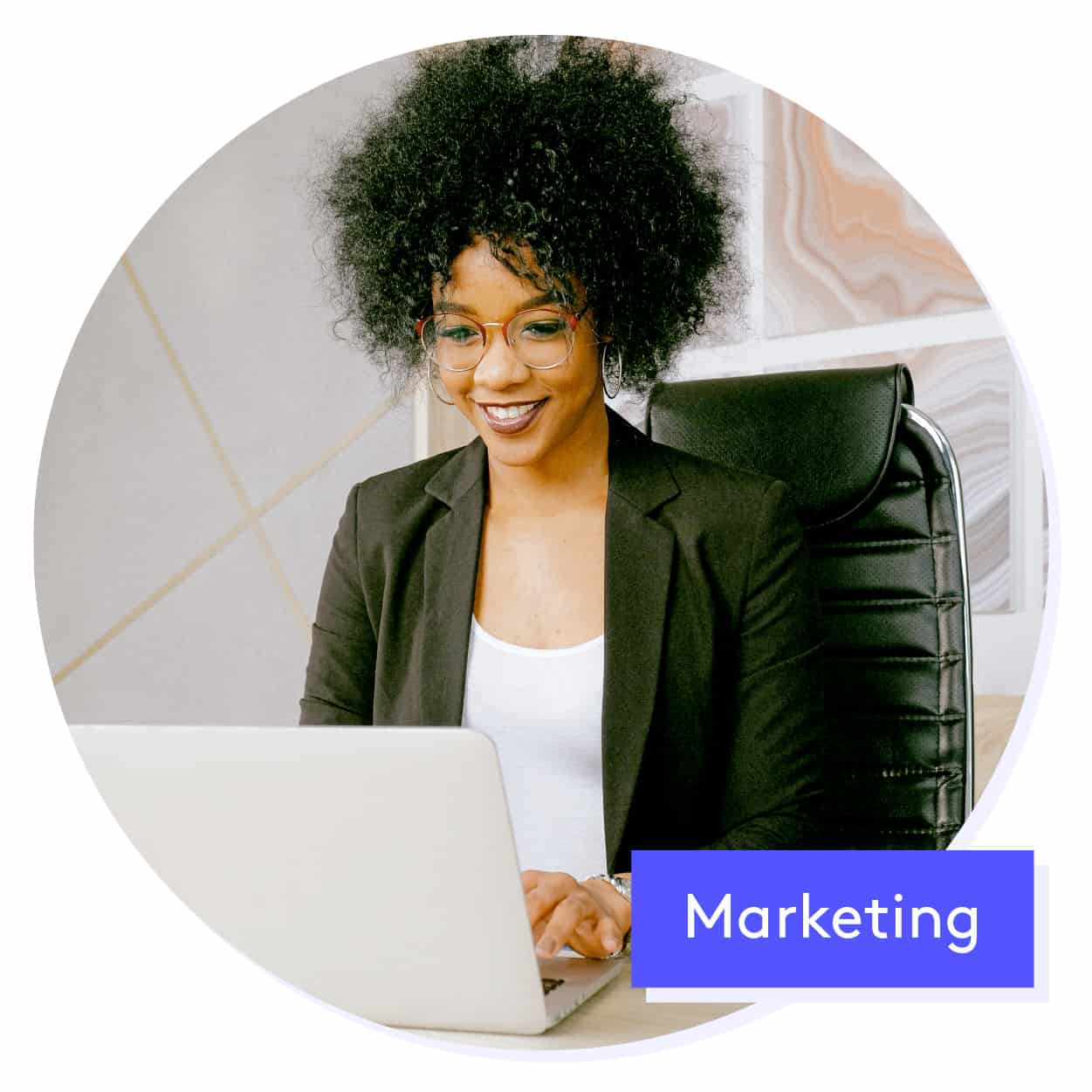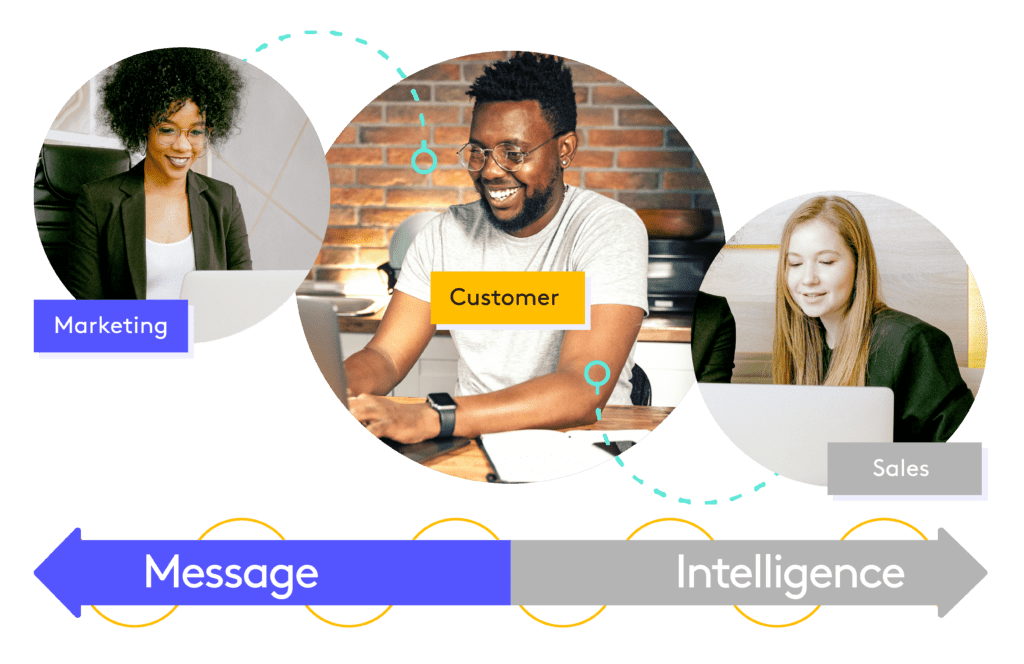Aligning Your Go-To-Market Teams: Why Is It So Freakin’ Hard? – Chapter 1
Web Conversion
With content intelligence, go-to-market teams are empowered to develop their website experience in a way that helps increase traffic and conversions. By developing relevant messaging based on hot topics and leveraging AI-recommended content journeys, buyers stick around for more information and binge. With the right insights, teams can take informed actions and optimize faster.


A well-crafted website and a strategic content strategy affect a company’s bottom line, and while these two things might sound like they fall under marketing, sales and CS teams should also have a vested interest in the content considering that everyone is working towards the same revenue goals. When trying to improve web conversion it’s a full funnel play and everyone plays a part.
Keep these three things in mind when considering how to increase website conversions:
1. Content is the key to converting your website visitors.
When your visitor finishes reading a piece of content (or even before), your website should automatically serve-up subsequent pieces of content that are relevant to their place in the buyer journey. Knowing what content is relevant is an enablement motion to help your whole GTM team work smarter (not harder!)

Marketing knows what topics and types of content perform the best. If buyers prefer webinars over case studies, marketing has the data at their fingertips.

Sales and CS knows through anecdotal feedback which content was helpful throughout a buying journey, and ultimately led to a purchase decision.
2. Every team wants to provide helpful content to customers (while also collecting leads).
Traditional ways of sales and marketing is reminiscent of a pee wee soccer game: everyone is chasing the same ball but not working as a team. The most successful go-to-market teams develop a buyer-centric strategy, then they align on who is covering what part of the field in order to reach the goal. By having a unified view of your target, aligning on what they care about, and serving up meaningful education, teams are prepared to provide the buyer with a valuable experience. But, of course, there can still be competing priorities.

A great example of an infamous debate that happens between internal teams is the “to gate or not to gate” question about content for lead-generation. There are pros to delivering meaningful content upfront, for one it ensures the buyer will stick around. A random download is less of an intent signal than 10 minutes of content consumption. Here are a few other pointers that could finally end this debate for good:
![]()
Shorten your forms so they only ask for a person’s email address (not their company, title, revenue, number of employees, mother’s maiden name, and how they heard about you).
![]()
Display forms to unknown visitors only, or try engagement-based gating, or showing a form to your most-engaged visitors. If a visitor is engaging with your content for a meaningful amount of time, it means they’re interested in your solution. On the other hand, you could allow someone to consume a certain number of content pieces without filling out the form.
3. Website conversions can’t scale if you don’t have the right tools.
By adding PathFactory’s content intelligence to your content strategy, you can start making relevant recommendations at a scale no individual marketer (or team of marketers) could achieve on their own. But it’s not just about recommending content, AI-powered content intelligence also helps with:

Understanding your company’s content library, so you can develop at-a-glance insights about the content you already have (including length, difficulty, etc.), find out what drives the most conversions, and use that data to inform your content marketing strategy.

See what content types (case studies, e-books, etc.) or landing pages result in the most demo bookings to assist the business development team when writing cadences and collecting leads.
Remember, the goal should be to lead buyers through the buyer journey as quickly as possible so they’re prepared to have a conversation with sales.

